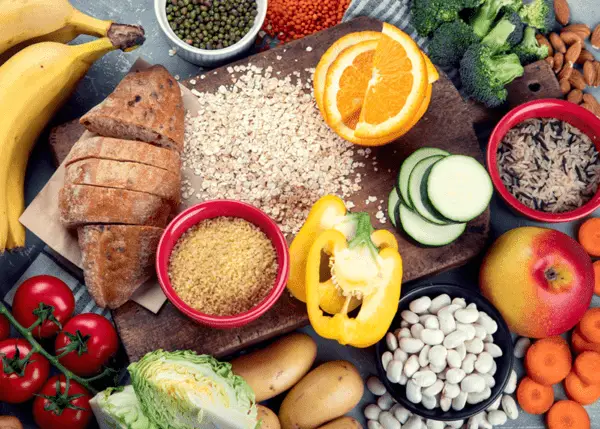The term macronutrients today is used to refer to proteins, carbohydrates and fats. The combination of the three is essential for overall health.
Proteins are important for building and repairing tissues and cells in the body. They also play a key role in important bodily functions. Some of the top foods high in protein include chicken breast, Greek yogurt, eggs (remember the white is the protein, the yellow is the cholesterol and one can do without!), quinoa, beef, fish, almonds and milk. A nutritional goal is 0.8 – 1 gram of protein per kilogram of body weight daily.
Carbohydrates have a protein-sparing effect
Carbohydrates provide the body with its main source of energy. They also have a protein-sparing effect, meaning they prevent protein from being used as an energy source. The standard daily nutritional goal of carbohydrates is to shoot for 45-65% of your calories from carbs. Yet, for diabetics as well as others, one has to be mindful that many carbohydrates contain sugar. There are simple carbohydrates and there are complex carbohydrates.
Simple carbohydrates are made up of simple sugars like glucose, fructose, sucrose, lactose, and maltose. These are digested and absorbed quickly and lead to spikes in blood sugar. Many of recognize this sugar spike in candy and sodas. Examples of simple carbohydrates include table sugar, honey, and the fructose found in fruits. Also recognize that simple carbohydrates exist with white bread and pastries.

Complex carbohydrates, a form of macronutrients, contain long chains of sugar molecules. They are digested more slowly and provide more sustained energy. Healthy choices include brown rice, starchy vegetables such as sweet potatoes, oats, quinoa (again on the list of good foods!) and pasta. Complex carbohydrates can be further divided into two types: starchy carbohydrates and fiber.
Starchy carbohydrates such as whole grains, legumes and starchy vegetables are broken down into glucose molecules during digestion. This glucose enters the bloodstream and is used by cells for energy or stored as glycogen in the liver and muscles for later use.
The Health Benefits of Fiber
Fiber, on the other hand, is a type of complex carbohydrates that the body cannot fully digest. It passes through the digestive system mostly intact, providing various health benefits, such as promoting regular bowel movements and potentially reducing the risk of certain diseases. Another way to help control blood sugar is to look to fiber. Fiber slows digestion, which helps control blood sugar. Carbohydrate sources high in fiber include vegetables, fruits, and whole grains. While some people have to be mindful of the sugar in fruits, in general natural sugars like those in fruit and mild are okay in moderation.
It’s important to note that not all carbohydrates are created equal. While simple carbohydrates should be limited, complex carbohydrates, a form of macronutrients, from whole, unprocessed sources should be prioritized for their nutritional value and potential health.
While fats get a bad reputation, they are necessary as they provide 9 calories per gram (carbs are 4 calories per gram) making it a necessary energy-dense macronutrients. Fats are further divided into unsaturated, saturated, and trans fats.
Unsaturated Fats
Unsaturated fats, the healthiest type of fat, consist of monounsaturated and polyunsaturated fats and help to lower cholesterol and reduce risk of heart disease. Foods such as avocados, nuts, seeds, olive oil, and sunflower oil fall into this category.
Saturated fats are primarily found in animal sources such as red meat, butter, cheese and milk. Saturated fats raise LDL (bad) cholesterol which increases risk for cardiovascular disease. Regarding their daily intake amount, many experts suggest that saturated fat should be limited to less than 10% of one’s total daily calories.
Trans fats are unsaturated fats that have been artificially hydrogenated to turn them into solid fats, and with it longer shelf lives. These fats are found in margarines, fried foods, and snack foods. Trans fats raise LDL cholesterol and lower HDL (good) cholesterol. They also increase inflammation and harden artery walls. One should stay away from Trans fats as much as possible.
All of above is for information only, and is not to be taken as medical advice. Please see your doctor for formal medical advice.
Barry Schustermann
Follow me on X @BarrySchust
Follow me on Facebook @Barry Schustermann



